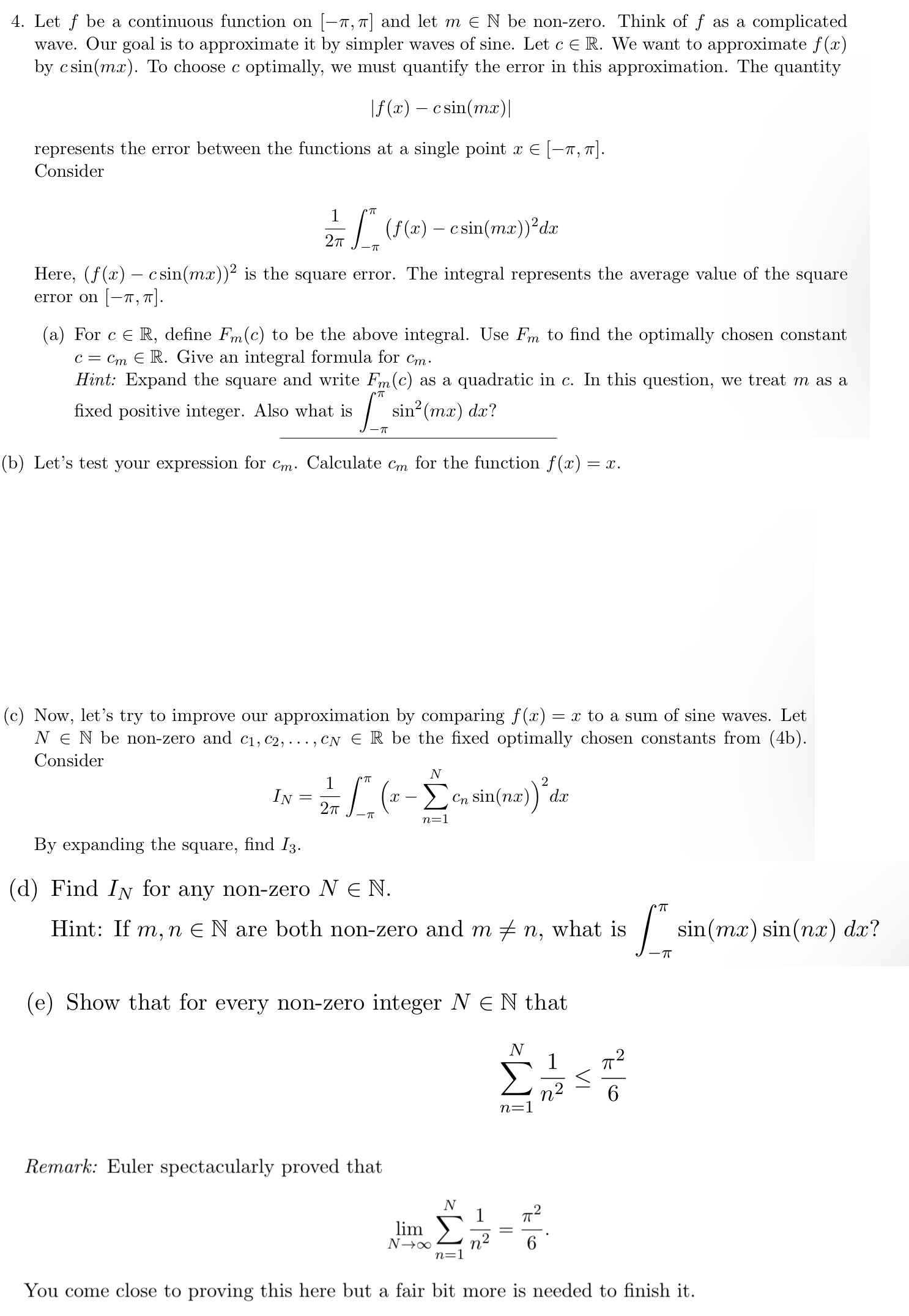Answered step by step
Verified Expert Solution
Question
1 Approved Answer
4. Let f be a continuous function on [-7, 7] and let m N be non-zero. Think of as a complicated wave. Our goal

4. Let f be a continuous function on [-7, 7] and let m N be non-zero. Think of as a complicated wave. Our goal is to approximate it by simpler waves of sine. Let c E R. We want to approximate f(x) by csin(mx). To choose c optimally, we must quantify the error in this approximation. The quantity |f(x) c sin(mx)|| represents the error between the functions at a single point x = [,]. Consider 1 2T [ (f(x) csin(mx)) dx - Here, (f(x) csin(mx)) is the square error. The integral represents the average value of the square error on [-T, ]. (a) For c ER, define Fm (c) to be the above integral. Use Fm to find the optimally chosen constant c = cm R. Give an integral formula for Cm. Hint: Expand the square and write Fm (c) as a quadratic in c. In this question, we treat m as a fixed positive integer. Also what is - sin (mx) dx? (b) Let's test your expression for Cm. Calculate cm for the function f(x) = x. (c) Now, let's try to improve our approximation by comparing f(x) = x to a sum of sine waves. Let N = N be non-zero and C1, C2, ..., CN E R be the fixed optimally chosen constants from (4b). Consider 1 IN 2T By expanding the square, find 13. N (- cn sin(nx) dx (d) Find IN for any non-zero N N. n=1 sin(mx) sin(nx) dx? Hint: If m, n = N are both non-zero and m n, what is [" (e) Show that for every non-zero integer N = N that N Remark: Euler spectacularly proved that n=1 N T lim N n n=1 VI 70 6 You come close to proving this here but a fair bit more is needed to finish it.
Step by Step Solution
There are 3 Steps involved in it
Step: 1

Get Instant Access to Expert-Tailored Solutions
See step-by-step solutions with expert insights and AI powered tools for academic success
Step: 2

Step: 3

Ace Your Homework with AI
Get the answers you need in no time with our AI-driven, step-by-step assistance
Get Started


